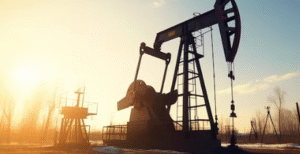$USO $GLD $DIA
#Greenland #Russia #China #Arctic #Geopolitics #USForeignPolicy #NationalSecurity #EnergyResources #RareEarthMetals #GlobalEconomy #Commodities #NordicRegion
Incoming U.S. President Donald Trump stirred controversy with his intense focus on Greenland, suggesting it may be an area of strategic interest even worth pursuing through forceful means, though such comments remained ambiguous. Greenland, governed by Denmark, has become a geopolitical flashpoint highlighting the intersection of national security, resource competition, and global influence in the Arctic. While Trump’s remarks brought the topic to the public consciousness, U.S. interest in Greenland dates back decades. Shortly after World War II, America proposed a payment of $100 million in gold to Denmark, envisioning Greenland as a critical asset due to its location and natural resources. In today’s context, this region’s perceived value has only increased with the Arctic’s warming climate exposing vast untapped energy reserves and opening new shipping routes. This dynamic has also drawn the attention of two major U.S. rivals—Russia and China—heightening tensions and competition in the region.
The economic significance of Greenland lies largely in its untapped resources, including oil, gas, and rare earth metals, which are critical to global supply chains. Rare earth metals, in particular, are essential components for advanced technologies like electric vehicles, wind turbines, and military equipment. While companies have yet to establish large-scale operations on the island, the increasing global demand for these materials makes Greenland a potential hotspot for future mining projects. Investors in commodity markets could closely monitor developments in the Arctic as access to these resources could shift market prices and supply chains. For example, shares of major mining companies or energy-focused ETFs such as $DIA could react sharply to any policy changes or geopolitical tensions in this region.
The competition over Greenland also highlights the broader geopolitical strategies of the world’s major powers. Russia has heavily invested in Arctic military bases and infrastructure to solidify its presence, while China has labeled itself a “near-Arctic state” and seeks greater access to the region’s resources. For the U.S., increasing influence in Greenland would not only curb the expansionary ambitions of Russia and China but could also strengthen American energy independence and security. Markets sensitive to geopolitical risk, such as oil-focused ETFs like $USO, often display increased volatility amid such developments. Investors might interpret moves in the Arctic as potential disruptors or accelerators for global energy and commodity markets, depending on the outcomes.
Denmark’s steadfast refusal to sell Greenland underscores the diplomatic challenges ahead for the U.S. as it balances its strategic pursuits with maintaining strong relations with Nordic allies. Any aggressive moves could create tension within NATO, but a collaborative approach involving investments and shared research in Arctic infrastructure could strengthen U.S.-Nordic ties. From a market perspective, such cooperation might benefit trade, shipping, and logistics companies leveraging new Arctic routes. Meanwhile, rising tensions in the Arctic—especially amid discussions of forceful action—could provoke market risk-off sentiment, pushing investors toward safe-haven assets like gold, represented by $GLD. Whether through diplomacy or economic partnerships, the Arctic’s prominence in global affairs seems set to grow, influencing geopolitics and financial markets alike.







Comments are closed.